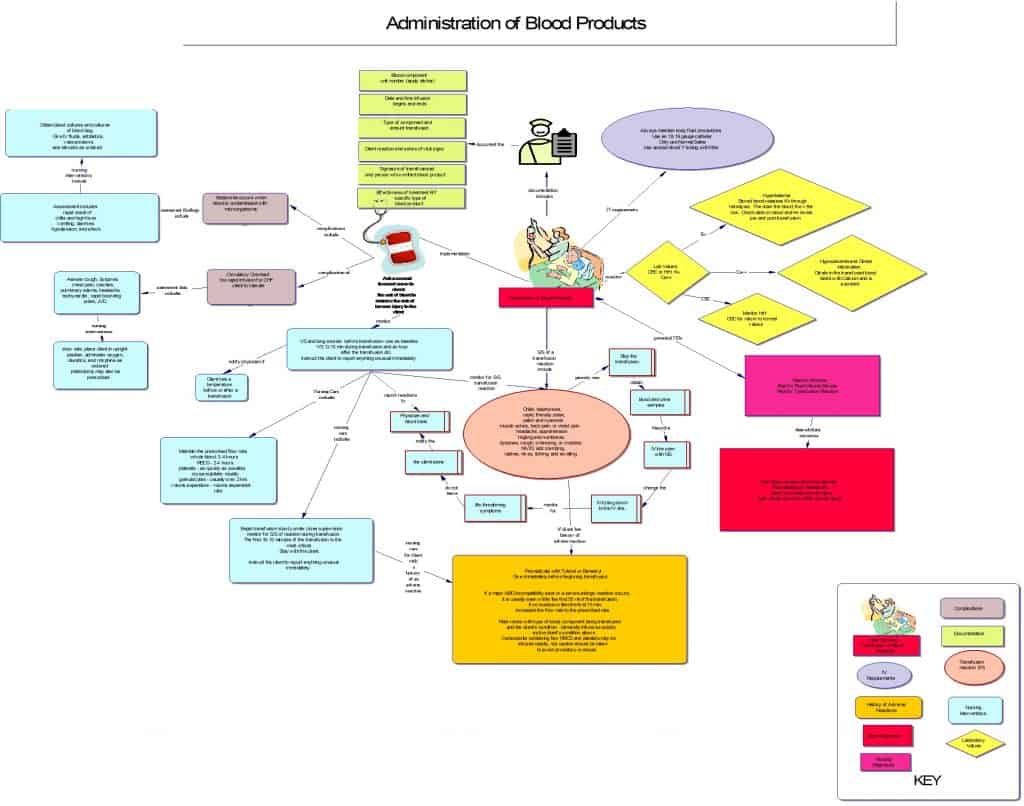Shadow Health Assignments
Using Visual Tools to Enhance Clinical Judgment in Nursing Students
Graphic organizers are learning tools that present connections between knowledge or concepts in a visual manner. They can be simple or complex and are useful for students at all levels of learning. These tools can be created by educators or students, depending on their purpose. For educator-generated organizers, educators might complete part of the tool and have students finish the rest.
Shadow health respiratory assessment transcript

Struggling to meet your deadline?
Get your assignment on Using Visual Tools to Enhance Clinical Judgment in Nursing Students done by certified MDs and PhDs in the USA. ORDER NOW!
In nursing programs before getting licensed, graphic organizers can improve learning and critical thinking, especially skills needed for making safe and appropriate clinical judgments. Depending on the type of graphic organizer, these tools offer benefits such as:
– Allowing students to build knowledge
– Helping students connect concepts and discover relationships
– Letting students practice thinking like nurses in action
– Developing a sense of importance in identifying key information
– Providing opportunities for active learning
– Enabling individual or collaborative learning and thinking
Connection Between Knowledge and Clinical Judgment
Nursing is based on knowledge. Nurses don’t need to memorize vast amounts of information, but they should know the crucial details and where to find other reliable data. A recent study by the National Council of State Boards of Nursing (NCSBN) found that new nursing graduates need solid knowledge to make safe clinical judgments and provide quality patient care. However, having strong knowledge alone doesn’t guarantee effective clinical judgments.
For certain types of graphic organizers, the six cognitive skills from NCSBN’s Clinical Judgment Measurement Model (CJMM) can serve as a framework for thinking like a nurse in action. These skills match the nursing process steps and include:
– Recognizing cues (assessment)
– Analyzing cues (analysis)
– Prioritizing hypotheses (planning)
– Generating solutions (planning)
– Taking action (implementation)
– Evaluating outcomes (evaluation)
Choosing Graphic Organizers for Learning
Nurse educators can select various graphic organizers to use in classrooms, clinical environments, or online based on their purpose. Here are three effective and user-friendly types of graphic organizers:
1. K-W-L Chart
2. Venn Diagram
3. Concept Map
1. K-W-L Chart
Based on the constructivism theory, the K-W-L Chart has three columns and helps students connect their new nursing knowledge with what they already know. In any learning setting, like at the start of a clinical day, students can use this chart. They begin by filling out the first two columns. They list what they already Know about the patient’s health condition or situation and what they Want to know. This helps them think critically and set goals for learning or critical questions for the day. Once the clinical day ends, students can add what they’ve Learned to the third column. This new knowledge could assist them in making better decisions about patient care.
Ariela Hernandez Acute onset dyspnea and syncope iHuman case study essay
Here is a partial example of a student’s K-W-L Chart for the postoperative care of a patient who had a total knee arthroplasty:
| KNOW | WANT TO KNOW | LEARN |
| Postoperative patients need to have their pain managed. A total joint arthroplasty is usually very painful. | Identify effective pain management strategies that are most effective for hospitalized patients who have a total knee arthroplasty. | Multimodal therapy combination of opioids, acetaminophen/NSAID, and gabapentin due to opioid crisis. Surgical cutting of bones, nerves and soft tissue causes various types of pain. |
| Postoperative patients are at risk for complications like DVT and infection. | Prioritize interventions to prevent DVT and infection in patients who have a total knee arthroplasty. | Priority to prevent VTE (DVT + PE): Anticoagulants such as LMWHs (Pharm), early Ambulation, and SCDs (Compression) = PAC. Also adequate hydration, leg exercises. IV antibiotic given 1-2 hours prior to surgery to prevent infection. |
2. Venn Diagram
The Venn diagram uses overlapping circles to help students compare different topics or ideas. Here’s how it works:
For this example of a Venn diagram, you can ask each student or a group of students to find the assessment data or patient information that relates to both diseases, like joint pain and stiffness. They would put these details in the area where the circles overlap, which is called Area C. Then, they would put the assessment findings that are specific to each disease in Areas A and B. For instance, they could place information about finger joint deformities in RA in one of these areas.
To make care more personal, you could give a case study about an older patient who has both RA and OA. Then, ask the student to identify the most important data for the nurse and put it in the right spots on the Venn diagram. This kind of activity lines up with the NCSBN CJMM skill of Recognize Cues, and you can use it in class, online, or during clinical learning.

3. Concept Map
Concept maps are commonly used graphic tools in nursing education today, especially in clinical settings. However, they can also be used in the classroom, labs, or online. The purpose of a concept map is to connect different pieces of information or data to help learners understand and think better.
If you’re a nurse educator, you might already ask your students to make concept maps, also known as care maps, instead of the usual linear nursing care plans. There are various templates available for making these maps. But sometimes, these templates have empty spaces where students add assessment data, nursing actions, and such. While these templates are practical and consistent, they might limit the students’ creativity and don’t give them much chance to connect different ideas and find relationships between them.
The example concept map below shows important details about a nurse’s role in giving blood and blood products. The map shows how different pieces of information (concepts) are related. This helps educators evaluate how students are thinking when they make their maps. If you use a map that you made, make sure to explain what’s on it and how things connect. This can help students who learn better by listening and might feel overwhelmed by a busy visual tool.
The example concept map also points out many cognitive skills needed for clinical judgment if problems come up during the procedure. For instance, on the left side of the map, it talks about a potential issue called circulatory overload (Analyze Cues). It lists important details (Recognize Cues) and what nursing steps would be taken (Take Action). You could ask students which NCSBN CJMM skills they’re using or give labels for each skill to help them organize the information. So, this graphic tool can be used in class, online, or during clinical learning to help students develop their clinical judgment.

In short, graphic organizers are visual tools that you can use in different learning situations to help students learn more and improve their clinical judgment skills. These tools are based on evidence and work well for nursing students who come from different backgrounds and have different ways of learning.
Authors
Donna D. Ignatavicius MS, RN, CNE, CNEcl, ANEF, FAADN
Donna D. Ignatavicius, also known as “Iggy,” has been a nurse educator in various nursing programs for a long time. She is the writer of the well-known textbook, Medical-Surgical Nursing: Concepts for Clinical Judgment and Collaborative Care, 11th Edition. Donna is also actively involved with Elsevier as a leader in the NGN initiative. This involves helping educators get ready for changes in the NCLEX and making sure students are ready to care for patients as new nurses. She has recently co-authored a new textbook, “Strategies for Student Success on the Next Generation NCLEX® (NGN) Test Items,” along with Angela Silvestri. This book aims to assist students in mastering NGN test-taking skills.
Linda Silvestri PhD, RN, FAAN
Linda Silvestri is a highly trusted figure in NCLEX® review. She is the author of a widely acclaimed review book for the NCLEX-RN exam called Saunders Comprehensive Review for the NCLEX-RN Examination. Linda is also part of the NGN initiative with Elsevier, contributing her expertise to help educators get ready for the upcoming changes in the NCLEX and to emphasize the importance of students being prepared to care for patients upon becoming new nurses. She has collaborated with Angela Silvestri to co-author a new textbook, “Strategies for Student Success on the Next Generation NCLEX® (NGN) Test Items,” designed to assist students in mastering skills for taking the NGN exam.

Dont wait until the last minute.
Provide your requirements and let our native nursing writers deliver your assignments ASAP.